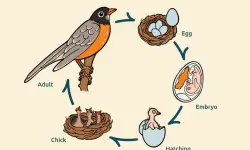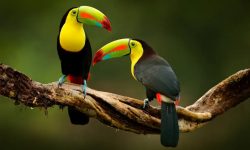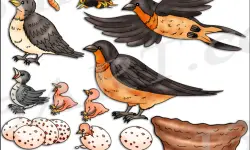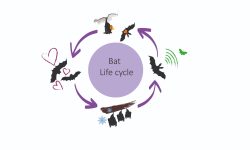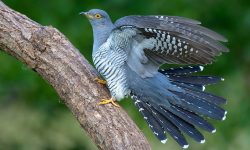Idaho, with its diverse landscapes ranging from rugged mountains to serene river valleys, is a hidden gem for bird enthusiasts. While many bird species grace this state, some are truly unique and special—either endemic or extremely rare in their distribution. This article dives into the fascinating world of Idaho’s most unique bird species, revealing what makes them stand out and why they deserve special attention.
Understanding Idaho’s Unique Bird Diversity
Idaho’s geography plays a crucial role in supporting diverse bird habitats. The combination of alpine forests, sagebrush steppes, and freshwater ecosystems creates a haven for both common and rare birds. The state’s isolation in parts and its varying climate have fostered the evolution and preservation of some extraordinary avian species.
1. Cassia Crossbill (Loxia sinesciuris) – Idaho’s Exclusive Finch
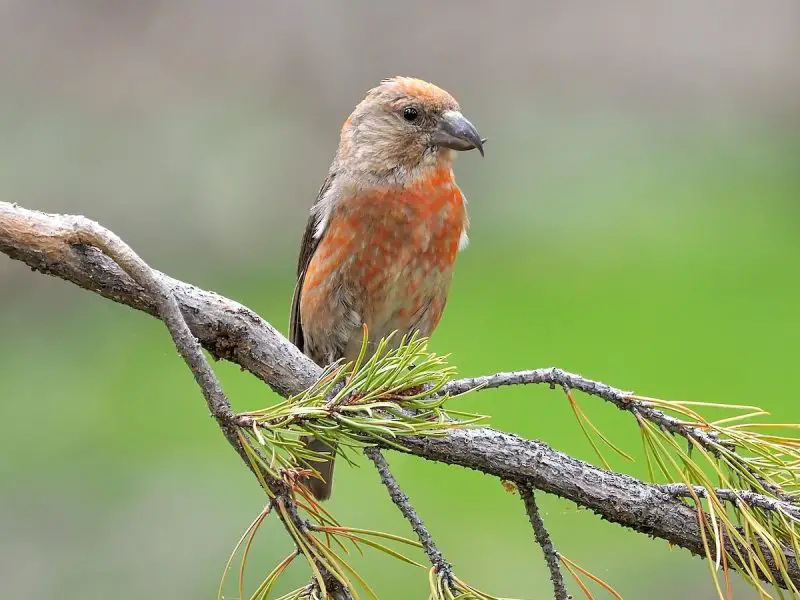
Distinctive Features and Habitat
The Cassia Crossbill is Idaho’s only bird species found nowhere else in the world. Its most distinctive trait is the uniquely crossed bill, perfectly evolved to pry open lodgepole pine cones—its main food source—in the remote south-central Idaho mountains. This specialized beak allows the finch to access seeds that other birds cannot, carving out a unique ecological niche. The bird’s reddish-brown plumage helps it blend seamlessly into its pine forest habitat, which is shaped by natural cycles like mountain pine beetle outbreaks.
Conservation Challenges
Due to its extremely limited range, the Cassia Crossbill is highly vulnerable to habitat loss, forest fires, and climate change. Because it relies exclusively on lodgepole pine seeds, destruction of these forests threatens its survival. Conservation efforts focus on protecting lodgepole pine habitats, managing wildfire risks, and monitoring population health through ongoing research. Preserving this finch means safeguarding an entire ecosystem critical to Idaho’s wilderness.
Why the Cassia Crossbill Matters
This finch symbolizes Idaho’s unique biodiversity and the delicate balance of specialized species. Its survival signals the health of the lodgepole pine forests and the mountain ecosystem, highlighting the importance of targeted conservation in protecting rare, endemic wildlife.
2. Wood River Valley Owl
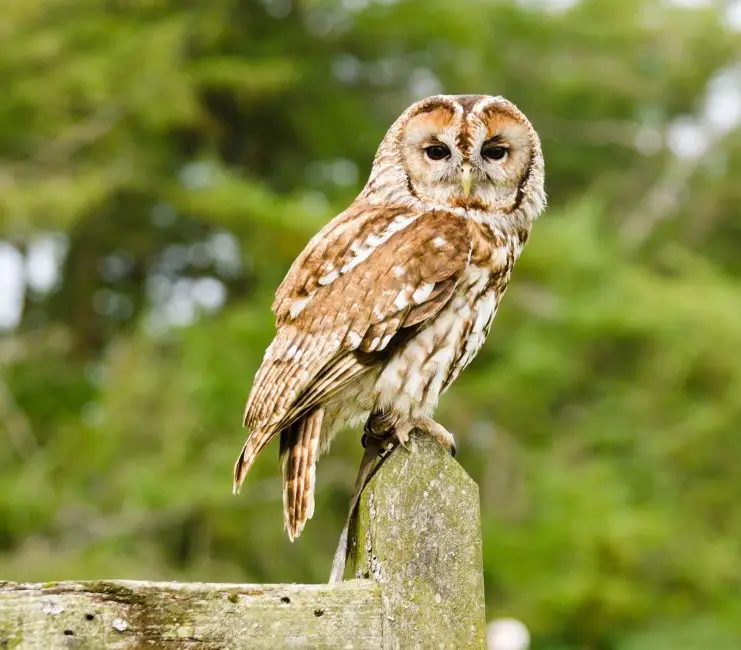
A Nocturnal Mystery of Idaho
The Wood River Valley Owl is a captivating and elusive bird native primarily to Idaho’s Wood River Valley region. Known for its haunting, melodic calls that echo through the night, this owl captures the imagination of local birdwatchers and naturalists alike. While it shares some physical similarities with the more widespread Great Horned Owl, the Wood River Valley Owl displays unique plumage patterns and behaviors finely tuned to the valley’s specific habitats—dense forests, rocky outcrops, and riparian zones.
Importance in Ecosystem
As one of the apex nocturnal predators in its range, the Wood River Valley Owl plays a critical role in maintaining ecological balance. By preying on rodents and small mammals, it naturally regulates populations that could otherwise threaten crops, spread disease, or disrupt local flora. This owl’s presence signals a healthy ecosystem, where predator and prey relationships function effectively to support biodiversity and ecosystem resilience.
3. White-headed Woodpecker (Picoides albolarvatus)

Striking Appearance and Habitat Preference
The White-headed Woodpecker stands out immediately with its bold white head contrasting sharply against its dark black body feathers. This striking coloration makes it one of the most visually distinctive woodpecker species in Idaho. It prefers mature pine forests, especially those dominated by ponderosa and lodgepole pines, where it forages and nests. This bird is relatively rare outside Idaho and a few neighboring western states, making its presence in Idaho’s forests a special sight for bird enthusiasts.
Ecological Role
Beyond its beauty, the White-headed Woodpecker serves as a vital component of forest ecosystems. By feeding on wood-boring insects and larvae, it helps control pest populations that could otherwise damage trees. Additionally, as a cavity nester, it excavates holes used not only for its own breeding but also by other animals such as small mammals and other bird species. This makes the White-headed Woodpecker a keystone species in maintaining forest biodiversity and health.
Breeding Season and Vocalizations
White-headed Woodpeckers typically breed from late April through July. During this time, pairs work together to excavate nesting cavities high in mature pine trees, often reusing the same sites in subsequent years. The female usually lays 3 to 6 eggs, with both parents sharing incubation and feeding duties.
Their vocalizations are distinct and easy to recognize. The most common call is a sharp, nasal “kik” or “pik” sound repeated rapidly, often used to communicate between mates or signal alarm. Unlike many woodpeckers, they produce relatively fewer drumming sounds, relying more on calls to establish territory and maintain contact.
4. Idaho Sage Grouse
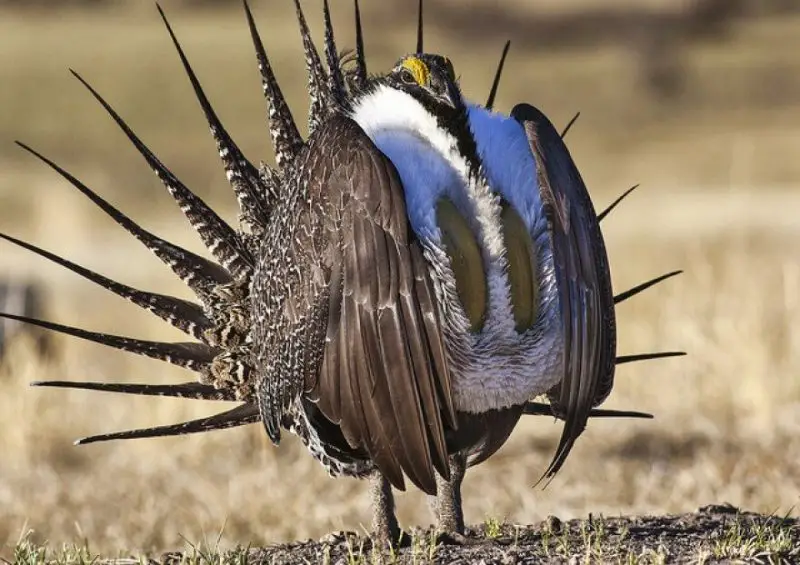
Symbol of the Sagebrush Steppe
The Idaho Sage Grouse, a distinct subspecies of the greater sage grouse, is an iconic resident of Idaho’s vast sagebrush plains. This bird is instantly recognizable for its large size, mottled brown and white plumage, and most notably, its extraordinary mating display. During the breeding season, males gather in traditional “leks” to perform elaborate strutting dances, puffing out their chest sacs and producing unique popping and hooting sounds to attract females. This spectacular behavior not only plays a vital role in reproduction but also cements the sage grouse as a cultural symbol representing the wild, open landscapes of the American West.
Conservation Status
Despite its significance, the Idaho Sage Grouse faces serious challenges. The widespread loss and fragmentation of sagebrush habitat due to agricultural expansion, urban development, and the encroachment of invasive plants like cheatgrass have led to steep population declines. These changes disrupt breeding grounds and reduce available food sources critical for survival. Recognizing these threats, state and federal agencies have launched comprehensive conservation programs focused on protecting and restoring sagebrush ecosystems, managing land use, and monitoring grouse populations. These efforts aim to ensure the long-term survival of this emblematic species and preserve the unique sagebrush steppe habitat it depends on.
iet and Ecological Role
The Idaho Sage Grouse primarily feeds on sagebrush leaves and buds, especially during the harsh winter months when other food sources are scarce. In warmer seasons, their diet expands to include insects, flowers, berries, and seeds, providing essential proteins and nutrients needed for breeding and chick development. This diet specialization ties them intimately to the health of sagebrush ecosystems.
Ecologically, the sage grouse plays a crucial role in maintaining the balance of the sagebrush steppe. By browsing on sagebrush, they help influence plant community dynamics, which in turn affects other wildlife species that depend on this habitat. Their elaborate lekking behavior also supports a diverse array of predators and scavengers that rely on sage grouse as prey, integrating the bird deeply into the food web. Furthermore, sage grouse serve as an indicator species—meaning their population health reflects the overall condition of the sagebrush landscape, guiding conservation priorities for this unique ecosystem.
5. Mountain Quail (Oreortyx pictus)
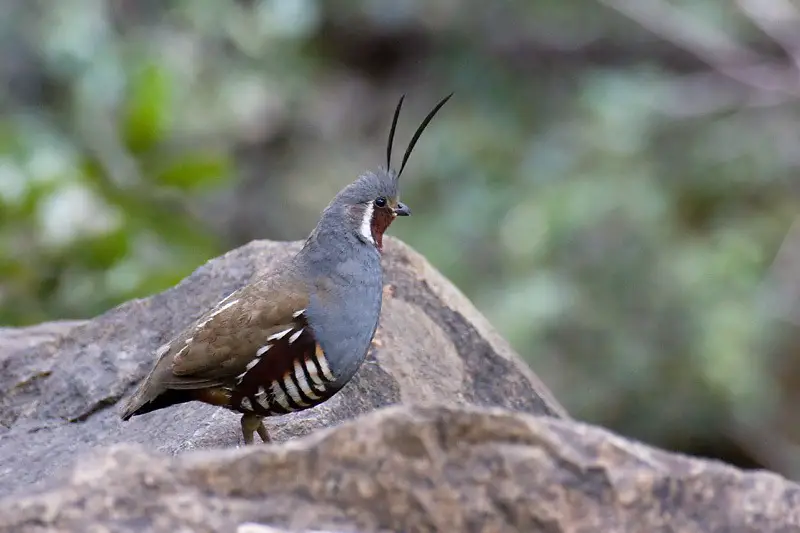
Mountain Quail are the most visually striking native quail species in Idaho, instantly recognized by their long, forward-curving head plume and rich chestnut and gray plumage. They favor steep, brush-covered slopes in mountainous terrain, where thick vegetation offers protection from predators and a rich source of food. As Idaho’s only native quail, they play a distinctive role in the state’s upland ecosystems.
These secretive ground-dwellers typically move in tight-knit family coveys. Their diet consists mainly of seeds, berries, bulbs, and tender green shoots, with an increased intake of insects during the breeding season to provide essential protein for growing chicks. Foraging mostly occurs in the early morning and late afternoon, using dense cover to remain hidden from view.
Mountain Quail breed in late spring, often selecting concealed nesting sites under shrubs or logs. The female lays 9 to 10 eggs in a shallow ground nest lined with grasses and leaves. Incubation lasts about 21–23 days. The chicks are precocial and begin following their parents shortly after hatching, learning to forage almost immediately. High parental care and group cohesion increase their chances of survival in rugged terrain.
6. Idaho Vesper Sparrow (Pooecetes gramineus)
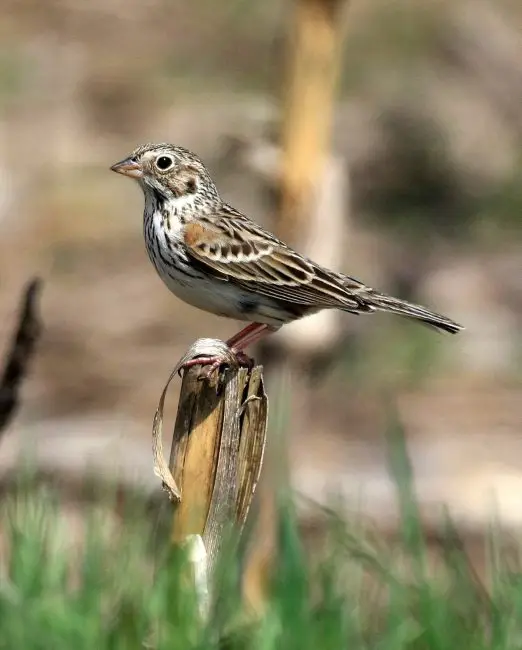
The Idaho Vesper Sparrow thrives in expansive native grasslands and gently rolling meadows. Its subtle brown streaked plumage and white outer tail feathers provide effective camouflage in dry, grassy environments. Its sweet, whistling song often rings out in the early morning and evening, becoming one of the defining sounds of Idaho’s prairie ecosystem.
This sparrow’s diet shifts seasonally. During the non-breeding months, it feeds mainly on seeds from grasses and forbs. In spring and summer, adults switch to an insect-rich diet including beetles, caterpillars, and grasshoppers to nourish themselves and their chicks. Foraging is typically done on the ground in open areas with scattered vegetation.
Breeding begins in late spring. The female selects a nesting site directly on the ground, typically in a slight depression hidden by surrounding grasses. She constructs a cup-shaped nest using fine grasses and lays 3 to 5 eggs. Incubation lasts about 12–13 days. The chicks grow rapidly and fledge within two weeks. Because the nests are highly vulnerable to mowing, grazing, and trampling, habitat management is crucial to sustaining healthy Vesper Sparrow populations in Idaho.
7. Red Crossbill (Loxia curvirostra)
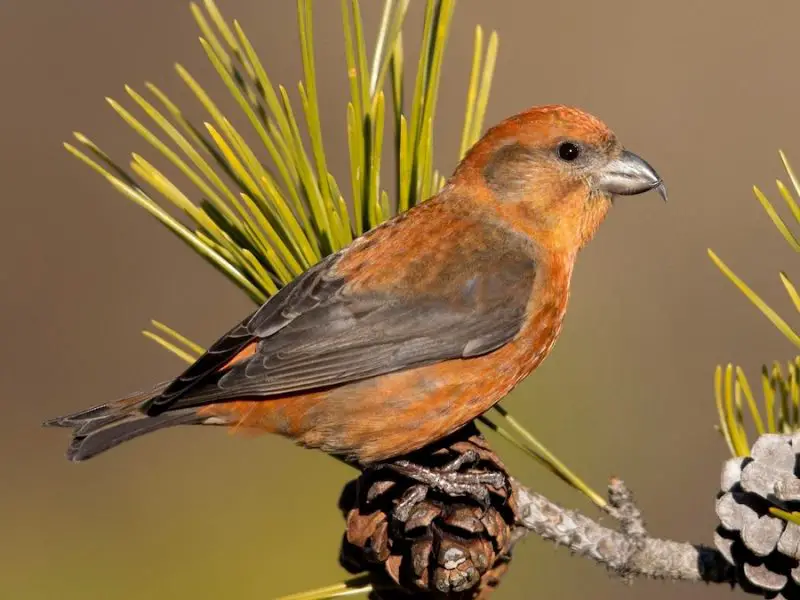
Though widespread across the continent, Red Crossbills in Idaho exhibit unique characteristics tied to the state’s conifer forests. These birds are named for their specialized crossed mandibles, which allow them to pry open tough pine cone scales and extract seeds. Idaho is home to several distinct call types of Red Crossbills, each adapted to feed on specific conifer species such as lodgepole pine or Douglas-fir.
Their diet consists almost entirely of conifer seeds. Using their crossed bills, they expertly manipulate cones to access the nutritious kernels within. This specialization leads them to be nomadic, following cone crop cycles rather than fixed migration patterns. In years with poor cone production, Red Crossbills may travel hundreds of miles in search of food.
Uniquely among songbirds, Red Crossbills can breed at almost any time of year—as long as food is abundant. Nesting often occurs in late winter or early spring when other species are still dormant. Nests are built high in conifer branches, where females lay 3 to 4 eggs and incubate them for about two weeks. The male feeds the female and later the chicks, relying heavily on stored seeds. This opportunistic breeding strategy allows the species to take full advantage of fluctuating food resources in forest ecosystems.
8. Clark’s Nutcracker (Nucifraga columbiana)
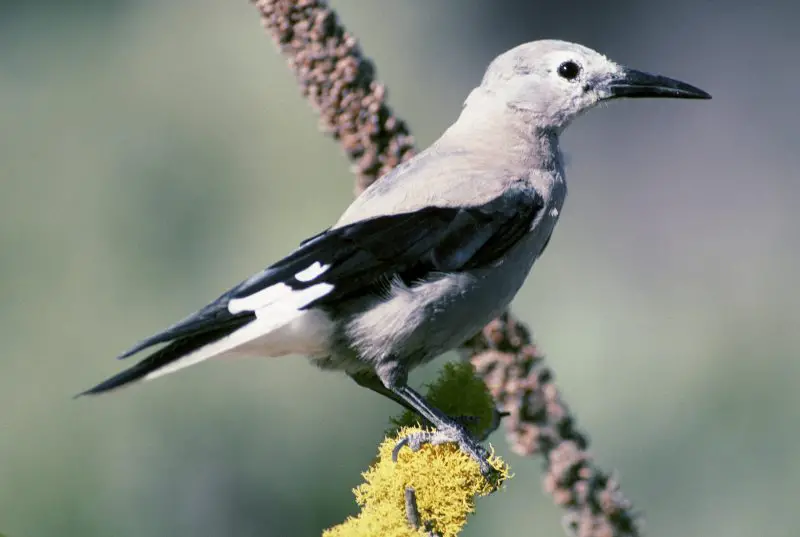
Clark’s Nutcracker is a keystone species in Idaho’s high-altitude forests, particularly those dominated by whitebark and limber pines. With its pale gray body, strong black wings, and sharp, raspy voice, it’s often seen flying across open slopes or caching pine seeds in rocky soil.
Their diet is centered around pine seeds, especially from whitebark pine cones, which they extract using their strong bills. In late summer and early fall, they collect tens of thousands of seeds and bury them in small caches across wide areas. Remarkably, they can remember most of these locations months later, even under snow, using spatial memory to retrieve food during the winter.
Clark’s Nutcrackers breed early in the season, often beginning in late winter when snow is still present. They nest in coniferous trees near reliable seed sources. The female lays 2 to 4 eggs, and both parents share incubation duties for about 18 days. They feed the nestlings primarily on stored pine seeds, which are regurgitated in small pieces. This early breeding strategy, timed with cached food, is tightly linked to the health of high-elevation conifer forests, making them highly vulnerable to declines in whitebark pine due to beetles and climate stress.
9. Lewis’s Woodpecker (Melanerpes lewis)
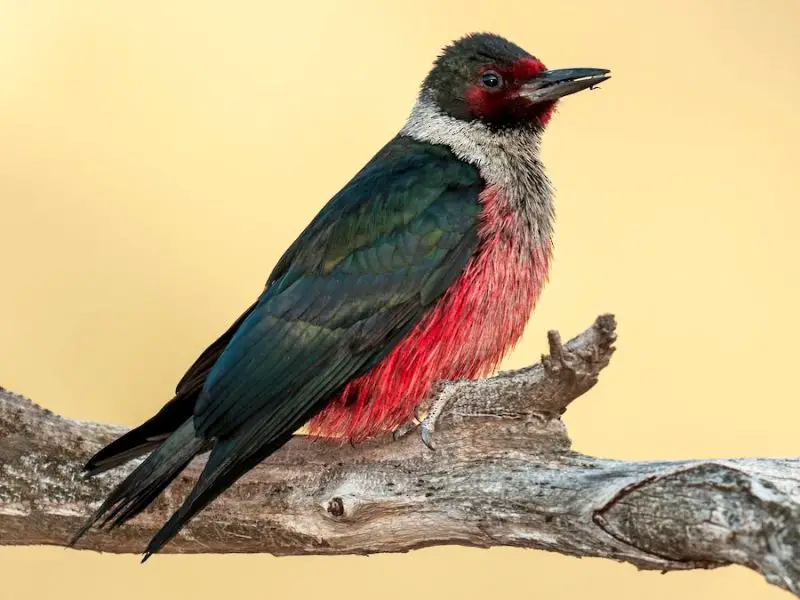
Lewis’s Woodpecker is a striking and unusual member of the woodpecker family, standing out with its iridescent green-black back, deep red face, and soft pinkish breast. Unlike most woodpeckers, it prefers open ponderosa pine forests, cottonwood groves, and burned woodland areas, where it can forage and nest with minimal competition.
Its feeding behavior is more similar to a flycatcher than a typical woodpecker. Lewis’s Woodpecker actively hawks flying insects in mid-air, often sallying from a perch to capture prey on the wing. It also consumes fruits, nuts, and acorns in autumn and winter, frequently storing food in bark crevices or behind loose wood.
The breeding season begins in late spring. Pairs excavate nesting cavities in dead or decaying trees, often reusing the same site over multiple years. The female lays 5 to 9 eggs, and both parents take turns incubating and feeding the young. Because they depend on large snags and open spaces for nesting and foraging, habitat degradation, fire suppression, and logging have contributed to population declines across their range.
10. Great Gray Owl (Strix nebulosa)
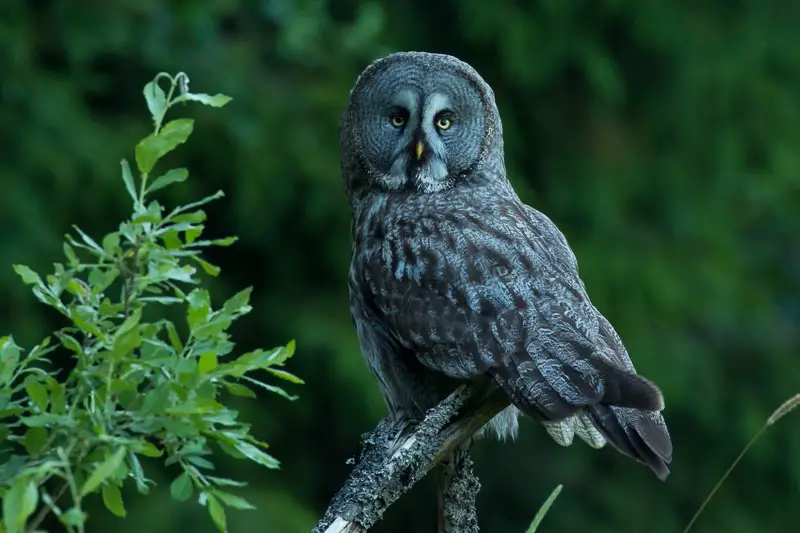
The Great Gray Owl is one of Idaho’s most iconic forest predators, distinguished by its enormous size, soft gray plumage, and ghostlike flight. Despite its fearsome appearance, it is a silent and elusive hunter that relies on stealth and precision to survive in the boreal and montane forests of central and eastern Idaho.
Its diet consists almost entirely of small mammals, especially voles, shrews, and pocket gophers. Using its disc-shaped face to funnel sound, the owl can detect and capture prey moving beneath snow or vegetation. It hunts by perching quietly and swooping down in near silence, aided by soft-edged flight feathers that muffle sound.
Great Gray Owls begin breeding in early spring, often selecting old hawk or raven nests in tall conifers or using large snags. The female lays 2 to 5 eggs and incubates them for about a month while the male hunts and brings food. Once hatched, chicks grow rapidly and fledge after about four weeks. This owl’s dependence on old-growth forest structure and its sensitivity to human disturbance make it an important indicator of forest health in Idaho’s wildlands.
11. Peregrine Falcon (Falco peregrinus)
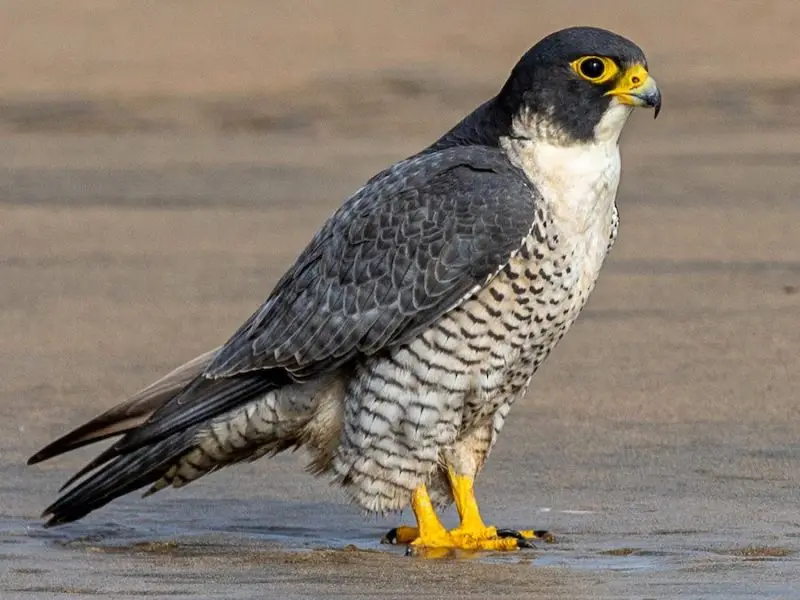
The Peregrine Falcon is one of the most iconic raptors in Idaho, known for its incredible diving speed that can exceed 200 miles per hour, making it the fastest bird—and fastest animal—on the planet. In Idaho, these falcons nest on rugged cliffs, tall canyon walls, and even man-made structures like bridges and towers, taking advantage of elevated vantage points to launch their high-speed hunting stoops.
Their diet consists primarily of medium-sized birds such as pigeons, doves, shorebirds, and ducks. Peregrines are aerial specialists, striking their prey mid-flight with powerful blows that often stun or kill on impact. Their exceptional vision and agility make them among the most efficient predators in the avian world.
Breeding typically begins in early spring. Peregrines do not build nests but instead lay 3 to 4 eggs in simple scrapes on cliff ledges. Both parents take part in incubation, which lasts about 32 days. Once hatched, the chicks are fed a steady diet of fresh-caught birds and fledge within six weeks. Once nearly extinct in North America due to pesticide use, Peregrine Falcons have made a dramatic recovery thanks to intensive reintroduction programs and legal protections—a true conservation success story.
12. Brewer’s Sparrow (Spizella breweri)
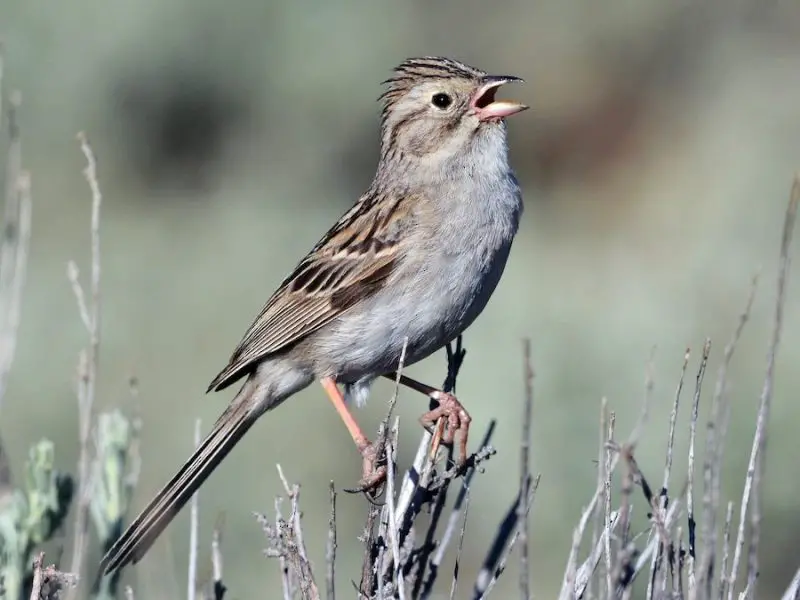
Brewer’s Sparrow is a small, unassuming bird that plays a big role in Idaho’s sagebrush ecosystems. Though visually modest with gray-brown plumage and a subtle streaked chest, its clear, tinkling song fills the air during spring mornings and has become part of the soundscape of the high desert.
This sparrow feeds primarily on insects such as beetles, caterpillars, and grasshoppers during the breeding season, which provide critical protein for nestlings. As fall approaches, its diet shifts toward seeds and small berries, allowing it to build up energy reserves for migration.
Brewer’s Sparrows arrive in Idaho in late April and begin nesting soon after. They construct small cup-shaped nests hidden in the lower branches of sagebrush shrubs, where the female lays 3 to 4 eggs. She incubates the eggs for about 11 days, and both parents help feed the chicks after hatching. Because they are closely tied to healthy sagebrush stands, this species serves as an important indicator of ecosystem integrity. Habitat loss due to grazing, invasive species, and development poses a significant threat to their long-term survival.
13. Yellow-breasted Chat (Icteria virens)
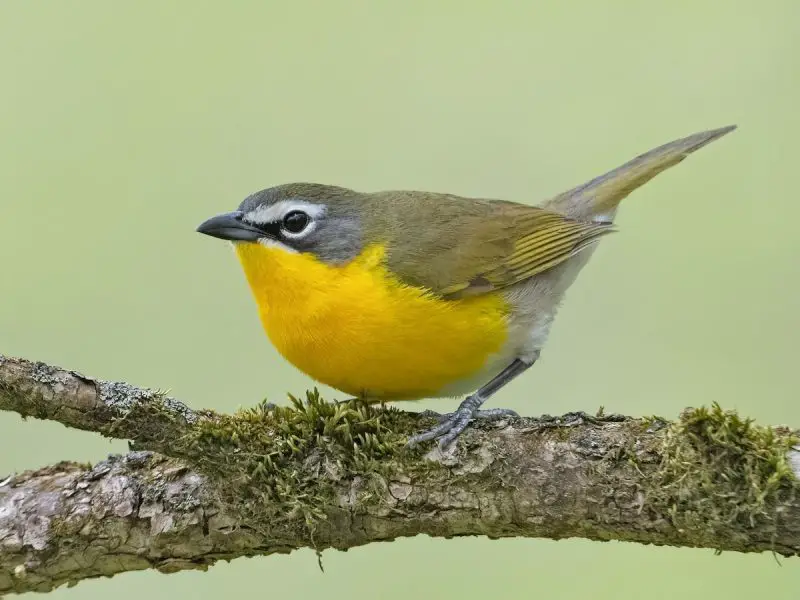
The Yellow-breasted Chat is one of Idaho’s most surprising songbirds—a large, secretive warbler with a bright lemon-yellow breast, olive-green back, and a white “spectacle” pattern around the eyes. Though more common in other parts of the U.S., small, isolated populations of chats persist in southern Idaho, especially in dense riparian thickets and shrubby drainages.
Chats have a varied diet that includes insects, spiders, caterpillars, and small fruits. During summer, they forage among dense foliage, often unseen but easily heard as they emit a wild chorus of whistles, clucks, growls, and warbles. This vocal complexity is unique among North American songbirds and contributes to their elusive charm.
Breeding begins in late May. Chats construct bulky cup nests hidden deep within shrubs or small trees, often close to water. The female lays 3 to 5 eggs, which she incubates for about 11 days. Both parents feed the chicks, who fledge around 10 days after hatching. These birds are sensitive to habitat fragmentation and require large patches of undisturbed brush for successful nesting. Their presence signals healthy riparian corridors in an increasingly dry and developed landscape.
14. Pinyon Jay (Gymnorhinus cyanocephalus)
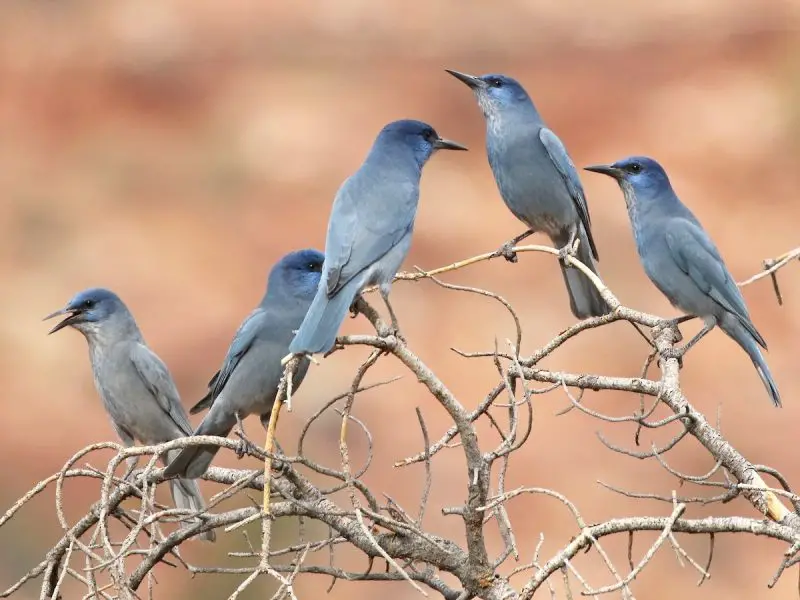
The Pinyon Jay is a highly social and intelligent corvid found in the pinyon-juniper woodlands of the western U.S., including isolated stands in southern Idaho. With its sky-blue plumage and raucous flock calls, it travels in noisy groups through arid forests, creating a dynamic presence wherever it goes.
Pinyon Jays feed primarily on pine seeds, especially from pinyon pines, but will also consume acorns, berries, and insects when available. During fall, they harvest and cache thousands of seeds in the soil, often traveling miles to find and bury them. Many of these caches are never retrieved, contributing directly to forest regeneration by spreading pine seeds across the landscape.
Their breeding season is unusual among songbirds. In some years, they begin nesting as early as January or February, even before snow has melted—timed to coincide with high seed availability. They nest in colonies, with loose stick nests built in junipers or pinyon pines. The female lays 3 to 5 eggs and incubates them for about 17 days, during which the male brings food to her. After hatching, both parents feed the young with a mixture of seeds and insects. Because their survival is so tightly linked to pinyon pine health, climate-driven shifts in seed production and woodland degradation pose major risks to their future.
15. Bald Eagle (Haliaeetus leucocephalus)
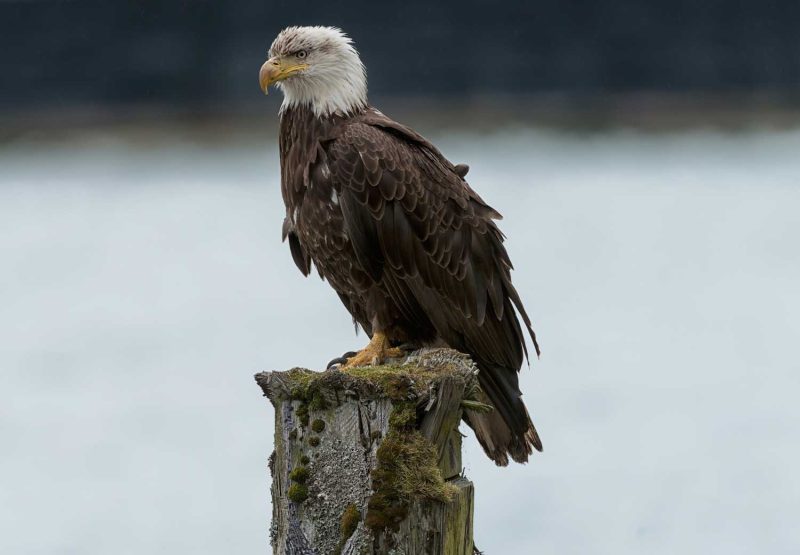
The Bald Eagle, with its massive wingspan and iconic white head, is a majestic symbol of Idaho’s wilderness. Though found across North America, its frequent presence along Idaho’s rivers, lakes, and reservoirs underscores the state’s rich biodiversity and commitment to wildlife protection.
These raptors are primarily fish eaters, often seen swooping low over water to snatch prey with their powerful talons. They also scavenge carrion and steal food from other birds—a behavior known as kleptoparasitism. Their opportunistic feeding helps clean up ecosystems and reduces disease spread among animals.
Bald Eagles begin courtship displays in mid-winter, with dramatic aerial acrobatics and synchronized flight. They build massive stick nests—often reused and added to for years—high in tall trees near water. The female typically lays 1 to 3 eggs, and both parents share incubation duties for about 35 days. After hatching, eaglets remain in the nest for up to 12 weeks, growing rapidly before taking their first flight. Thanks to decades of conservation work, including the banning of harmful pesticides and strong habitat protections, Bald Eagle populations have rebounded dramatically across Idaho and the U.S., representing one of the greatest wildlife recovery stories in American history.
16. Northern Pygmy-Owl (Glaucidium californicum)
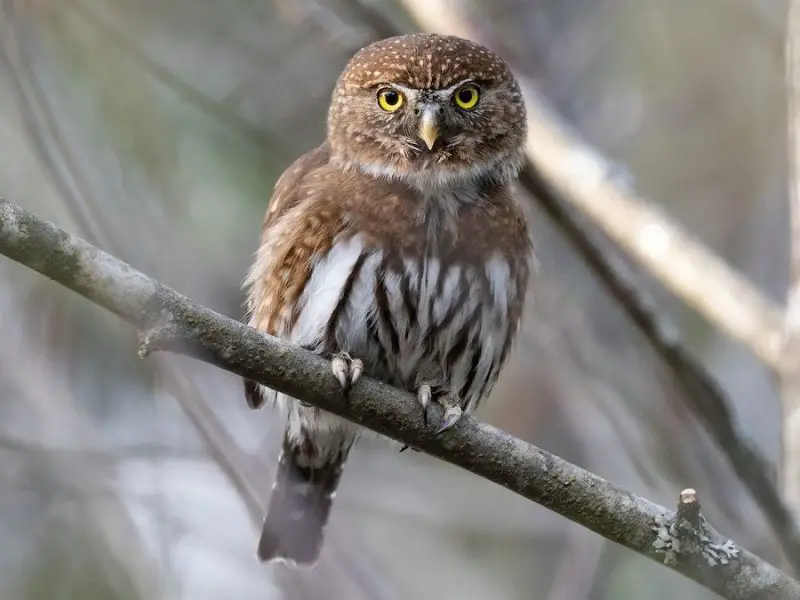
The Northern Pygmy-Owl is one of Idaho’s smallest raptors, yet it carries the fierce spirit of a predator many times its size. With a length of just 6 to 7 inches, this owl often goes unnoticed despite being active during the day—a rare trait among owls. It inhabits dense coniferous forests in Idaho’s mountainous regions, where it perches silently on high branches, scanning for prey.
Its diet is surprisingly diverse and aggressive for such a tiny owl. It regularly preys on small birds, rodents, lizards, and large insects. Unlike many owls that rely on hearing in total darkness, the Northern Pygmy-Owl hunts primarily by sight during daylight hours, using its swift, direct flight to ambush prey from cover.
Breeding begins in early spring. The female lays 3 to 7 eggs in old woodpecker cavities, typically at mid-elevation forests where nesting sites and food are abundant. Only the female incubates the eggs, while the male provides food throughout the nesting period. Chicks hatch after about 28 days and fledge roughly three weeks later. Because they rely on mature forest habitats with standing dead trees, Northern Pygmy-Owls are sensitive to logging and fire suppression. Their presence is an indicator of ecological integrity in Idaho’s montane conifer forests, making them both a conservation priority and a favorite among lucky birdwatchers.
Why Idaho’s Unique Birds Matter
Each of these species contributes uniquely to Idaho’s natural heritage, ecosystem balance, and even cultural identity. Protecting their habitats ensures biodiversity and offers incredible opportunities for wildlife watchers and researchers alike.
Conservation Efforts and How You Can Help
Idaho’s unique birds face threats from habitat destruction, climate change, and human activity. Supporting local conservation groups, practicing responsible birdwatching, and advocating for protected areas can make a tangible difference.
Conclusion
Idaho’s avian diversity is a testament to the state’s rich and varied natural landscapes. From the endemic Cassia Crossbill to the soaring Bald Eagle, these 15 unique and special bird species illustrate the importance of conservation and the joy of discovery. Whether you’re an avid birder or a nature lover, Idaho’s birds offer a captivating glimpse into the wonders of the wild.

